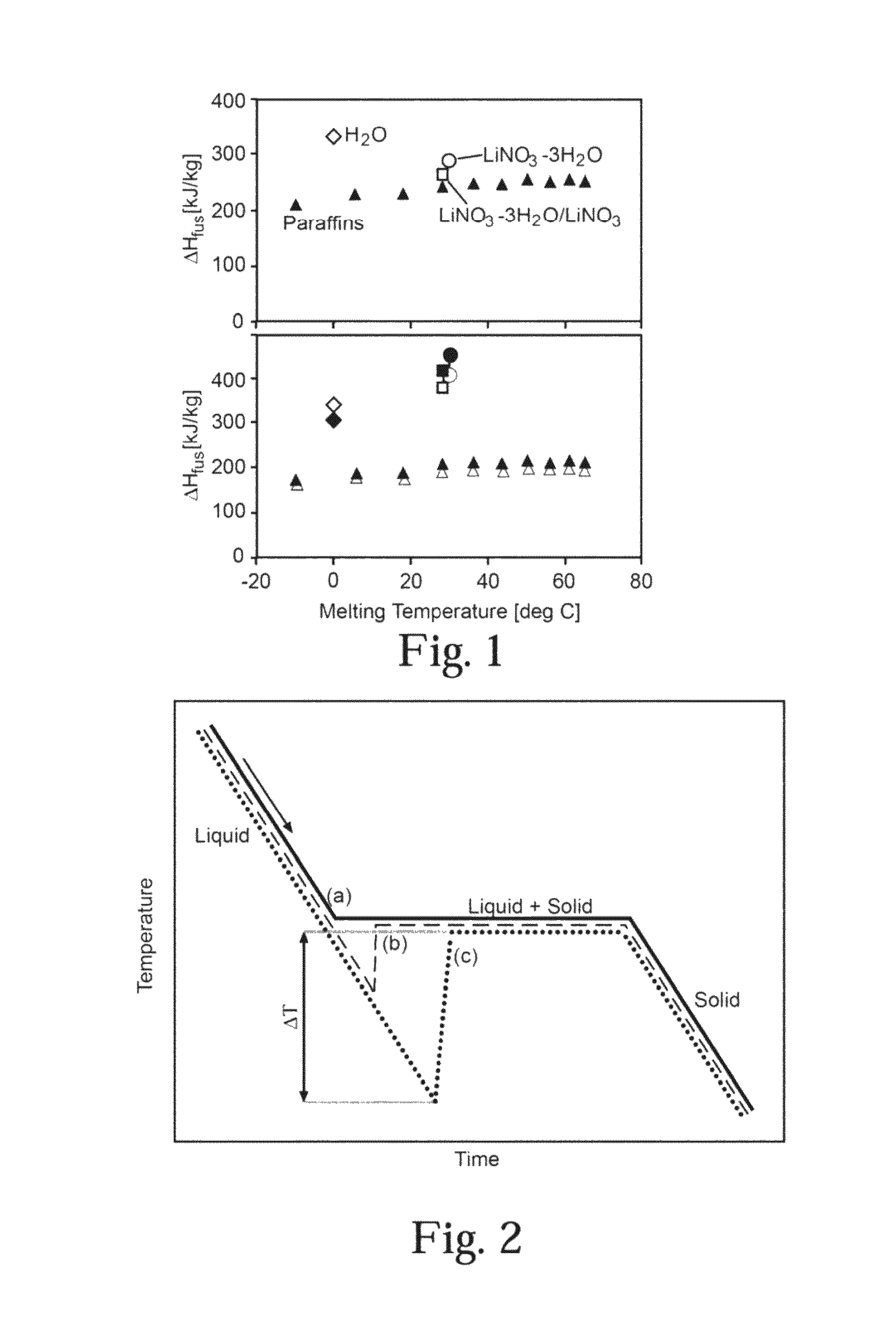Nucleating agent for lithium nitrate trihydrate thermal energy storage medium
- Summary
- Abstract
- Description
- Claims
- Application Information
AI Technical Summary
Benefits of technology
Problems solved by technology
Method used
Image
Examples
examples
[0023]The examples were conducted as follows:
[0024]Approximately 10 μL of lithium nitrate trihydrate was hermetically sealed in aluminum pans both with and without nucleation agents. These pans were heated and cooled at continuous rates of 10° C. / min from −20° C. to 60° C. in a differential scanning calorimeter (DSC). Average undercooling (ΔT), as well as 2σ standard deviations of crystallization temperatures were collected over a number of cycles and are shown in FIG. 3 and Table 1.
[0025]
TABLE 1wt Avg. ΔT2σ# Nucleating Agent%[° C.][° C.]cycles1) Pure LiNO3—3H2O—38.814.3192) Zu3(NO3)2(OH)40.913.3 5.0 73) Cu3(NO3)(OH)5—0.8 5.8 0.2 52(H2O)
[0026]Following the conditions described above, pure lithium nitrate hydrate approaches average undercoolings of about 40° C. (and in some cases greatly exceeds this amount). Furthermore, great variation exists from run-to-run on the crystallization temperature of the heat storage material. Lithium nitrate trihydrate containing about 1 wt % of a prev...
PUM
 Login to View More
Login to View More Abstract
Description
Claims
Application Information
 Login to View More
Login to View More - R&D
- Intellectual Property
- Life Sciences
- Materials
- Tech Scout
- Unparalleled Data Quality
- Higher Quality Content
- 60% Fewer Hallucinations
Browse by: Latest US Patents, China's latest patents, Technical Efficacy Thesaurus, Application Domain, Technology Topic, Popular Technical Reports.
© 2025 PatSnap. All rights reserved.Legal|Privacy policy|Modern Slavery Act Transparency Statement|Sitemap|About US| Contact US: help@patsnap.com



